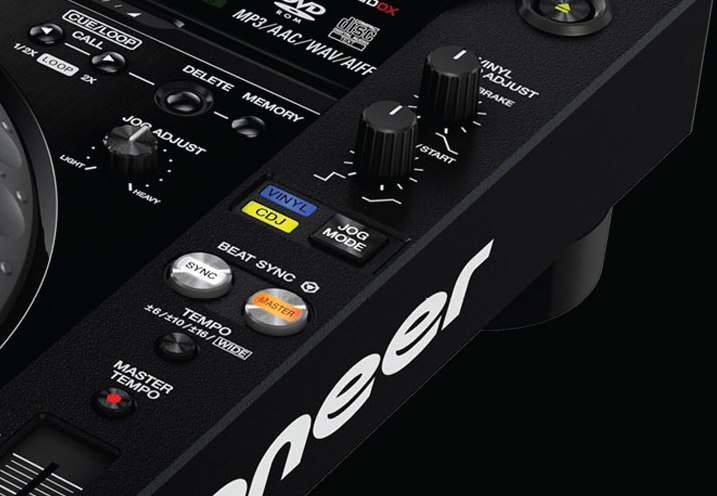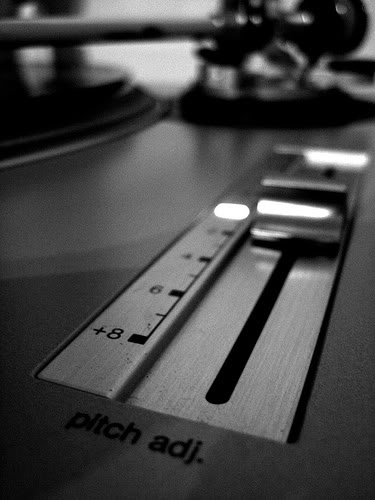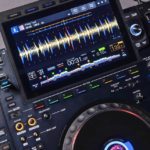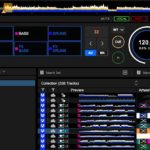
With Pioneer adding a sync button to its new CDJ2000nexus, the battle is won (or lost, depending what side of the fence you’re on): The “sync” button is now part of DJing. Today’s article isn’t going to debate the pros and cons (it’s been done to death, and continues to be done all over the web seemingly everywhere I look), rather, to discuss a more intriguing, practical matter: What’s the use of the now seemingly redundant pitch faders, if not for manual beatmatching?
The truth is, even if you always use sync and never even attempt to beatmatch manually using them (although you really should; see 5 Reasons Why All DJs Should Learn To Beatmatch By Ear for why), there are actually plenty of things they’re still good for. So today we’ll recap what the pitch fader is really there for, before considering four alternative uses for it in a “sync button age”.
What a pitch fader is meant to do
Pitch faders permanently adjust the BPM (beats per minute) of your tune. In other words, they adjust the speed of the music. “Manual beatmatching” describes use this as a tool to help you to get two tunes to the same speed before mixing one into the other. You use the jogwheel to momentarily speed up or slow down one of the tunes until both sets of beats line up, and then adjust the pitch fader to “lock in” the change so they don’t drift apart again. It’s a trial and error thing, but that is the classical use for the pitch fader and the reason why it’s there at all.

However, as we stated in the introduction, nowadays the sync button can, nine times out of ten, do all that troublesome stuff for you. Beatgridding (or pre-preparing this stuff so your computer doesn’t have to guess) can deal with most of the rest. All of this effectively makes the pitch fader redundant.
But not so fast! Here are our four reasons why even if you’re addicted to the “sync” button (and there’s no reason why you shouldn’t be), you shouldn’t be scared of some manual pitch fader action either.
4 reasons to use the pitch fader
1. To mix tunes with large BPM differences
A good rule of thumb is never to mix tunes with more than about 4BPM difference between them. That means a 120BPM tune can be mixed into anything with a BPM of 116 to 124. Any more and tunes can start to sound weird. But often you do want to attempt a beatmix with tunes with a wider BPM variance.
Trouble is, if you hit “sync”, the incoming tune is likely to be matched to the current tune or the master clock (don’t worry about the difference for the sake of this explanation), so if the current tune is 120 and the incoming tune is 130, the incoming tune will be slowed down to 120. In other words it’s a long way (10BPM) from where it should be played – more than 4BPM.
The better suggestion is to gradually adjust the outgoing (120BPM) tune to half of the difference between the two or 125BPM, using the manual pitch fader, then press “sync” on the 130BPM tune on the other deck (which means it will be slowed down to 125, which is better than 120). Once you’ve done the mix, you choose your next tune, and do this “50%” trick with the new tunes too.
In this instance, you’ve reduced the BPM jump to 5% which is much better than the original 10%.
2. To achieve a brake or speeding up effect
Depending on your DJ software or controller, you may be able to change the “pitch range” of your pitch fader. Pitch faders are usually set to +/-6% or +/-8%; that means that fully “up” or “down”, the pitch fader can slow or speed up your tune by 6% or 8%. But normally there’s a button that allows you to change this, to maybe 12%, or 25%, or 50%, or even 100%.

While the trade-off here is that any adjustment made will probably be less accurate when set to one of these settings, the good thing about (especially) a 100% option is that you can use it as an effect, similar to turning a record deck’s power off when the record is playing, so it slows down gradually but audibly. Just set your pitch fader to 100%, and slowly move it “down” (which is actually up, or away from you) while playing a tune. Of course, you can speed a track up by doing the same thing.
You can also do it really quickly on sound effects like sirens and so on for more extreme effects. Can be a great, expressive thing to do especially when you combine your chosen track with effects. (Definitely one to experiment with at home before inflicting it on a club audience, though.)
3. To make harmonic mixes sound better
Harmonic mixing is mixing tunes in the same or a related musical key together. This can often result in exceptionally good sounding mixes, and is made child’s play by simple-to-use software like Mixed In Key, which analyses musical key for you and adds it to your files so your DJ software can display it for you.
But one prerequisite for mixing in key easily is using the “keylock” function on your software, which means that no matter at what speed your track is playing, the key remains the same – the track is maintained at the key it was originally recorded in. (In other words, the software prevents the notes getting higher when you speed the track up, or lower when you slow it down.)
Trouble is, keylock can make tunes sound bad – thin, raspy, and generally a poor substitute to the same track played without the keylock on. It’s a symptom of your computer doing its trickery to keep that musical key where it should be. It doesn’t always sound bad, and not so much when the track is close enough to its original BPM (see point 1 above), but it can still be an issue.

Ptich fader to the rescue! Here’s how DJs get around this. Once you’ve mixed a tune in with the keylock on, if it sounds a little ropey (usually it’ll be because it is a few BPMs too many away from its recorded speed), use the pitch fader to slowly bring it back to the BPM it was recorded at.
Once the tune is at exactly the speed it should be, you don’t need the keylock on at all, so you can switch it off without any adverse effect on what your audience is hearing – and now, the track is playing exactly as intended, and at the highest quality possible.
When combined intelligently with the skill taught in point 1, and always keeping an eye on the BPMs to keep variances as low as possible, this is one of those tricks that can fool most of the people, most of the time; it means that for the majority of your DJing time, the sound quality is improved markedly, while you dtill get to take advantage of harmonic mixing techniques.
4. To manually control acappellas on decks 3 and 4, while syncing on decks 1 & 2
This is a Jedi trick, and one used a hell of a lot by DJs who have mastered manual beatmatching. Now, all but the most purist digital DJs are quite happy using sync (it saves time), so typically they will do just that when mixing from one deck to another (say, decks one and two) in “normal” DJing. But if you want to drop acappellas in over your tunes, a good place to have those is lined up on decks 3 and 4.
Thing is, acappellas don’t have a beat, so unless you’ve painstakingly beatgridded them beforehand, you can’t get them at the same speed as your playing tracks by hitting the “sync” button for them. No, you need to do it manually. Hence the pitch fader/jogwheel juggle as described in the introduction is necessary – just not for the “main” tracks, only for the samples, acappellas etc. that you’re using on your “extra” decks.
By using sync for the primary decks and the pitch faders for the “extras”, you get the best of both worlds.
Finally…
I don’t think the pitch fader is dead, far from it. Despite it being absent from some DJ controllers (I’m thinking the Reloop Contour and the DJ Tech 4Mix), and transformed into a pitch knob on at least one other (Novation Twitch), it’s still essential for manual beatmatching, and you really ought to know how to do that for all kinds of reasons as stated at the start of the piece.
But hopefully this article has given you some insights into ways the pitch fader’s use has morphed over time as digital with all its techniques and advances has edged into the DJ box. As with all the knobs, buttons and faders on whatever box of tricks you DJ with, though, there are really no rules – so feel free to experiment and use the pitch fader however you wish. Let your ears and your audience be the judges…
Have you got a use for the pitch fader that I haven’t touched on? Please share your thoughts in the comments!








